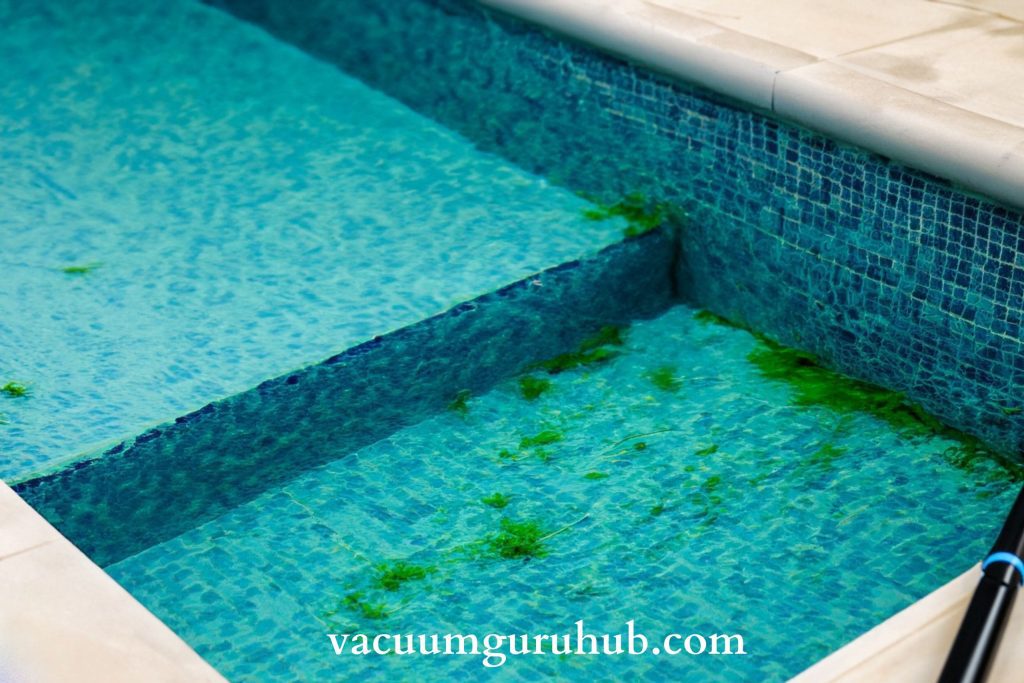Maintaining a crystal-clear pool is the goal of every pool owner, but dealing with dead algae can be a real challenge. Traditional methods often involve vacuuming, which can be time-consuming and cumbersome. In this comprehensive guide, we’ll delve into effective ways to remove dead algae from pool without a vacuum, ensuring your pool stays pristine and inviting.
Understanding Dead Algae Removal
Dead algae not only clouds your pool water but can also create an unsightly mess. Fortunately, you don’t always need a vacuum to address this issue. Let’s explore alternative methods that are both efficient and hassle-free.
1. The DIY Approach: Say Goodbye to Algae Without a Vacuum
When it comes to DIY pool algae removal, there are ingenious solutions that don’t require a vacuum cleaner. We understand the desire for a hands-on approach, so we’ve compiled a list of DIY solutions that make algae removal a breeze.
From using household items to clever techniques, these DIY methods ensure you can enjoy a clear pool without the need for expensive equipment. Dive into our guide for step-by-step instructions and turn your pool maintenance into a satisfying DIY project.
2. Eco-Friendly Algae Removal: A Natural Solution
For those environmentally conscious pool owners, discover the beauty of natural pool algae cleaning methods. Our guide explores eco-friendly ways to eliminate algae without resorting to vacuuming. From the power of natural enzymes to the benefits of strategically placed plants, we’ve got you covered with solutions that are both effective and planet-friendly.
Choosing the Right Products: Algaecides for Vacuum-Free Algae Removal
When it comes to treating pool algae, selecting the right products can make all the difference. Explore our guide on the best algaecides for vacuum-free algae removal, ensuring you invest in products that deliver results without needing a vacuum cleaner.
We’ve researched and compiled a list of the top algaecides in the market, providing you with insights into their effectiveness and ease of use. Say goodbye to algae and hello to a sparkling clean pool with our recommended algaecides.
Preventing Algae Growth: Essential Maintenance Tips
Prevention is often the key to maintaining a pristine pool. Our guide on pool algae prevention strategies covers essential maintenance tips that can help you keep algae at bay without relying on a vacuum.
From proper water circulation techniques to the importance of regular water testing, our comprehensive guide ensures you have a proactive approach to algae prevention. Say goodbye to the hassle of vacuuming and embrace a preventative maintenance routine.
Equipment-Free Algae Removal Hacks: Keeping It Simple
Not everyone has access to specialized pool equipment, and that’s okay. Our guide on equipment-free algae removal hacks is tailored for those who want simplicity without compromising effectiveness.
Discover efficient ways to get rid of algae in your pool without any specialized equipment. From manual scrubbing techniques to innovative DIY solutions, these hacks ensure your pool remains clear and inviting, even without high-end equipment.
Winter Pool Care: Removing Algae Without a Vacuum
Winter brings its own set of challenges for pool maintenance, but removing algae doesn’t have to be a daunting task. Our guide on winter pool care explores effective strategies for removing algae without the need for a vacuum.
From adjusting chemical levels to using winter covers strategically, we provide insights into maintaining a clean pool during the colder months. Ensure your pool stays pristine all year round with our winter-specific algae removal strategies.
How to Remove Algae from a Swimming Pool Without Using a Vacuum

Algae development in your pool might be aggravating, but don’t worry; there are efficient methods to manage it that don’t require the use of a hoover. Let’s get started!
- Brushing Algae Away
Manually brushing the pool’s surfaces is one of the most basic procedures. Scrub the algae off the walls and floor with a pool brush with strong bristles. Algae can be stubborn, so be diligent and persistent. This procedure will loosen the algae, allowing it to be filtered away more easily.
- Netting and Skimming
Skim the pool’s surface regularly to eliminate debris and floating algae. Additionally, use a pool net to scoop away larger algae clumps. This easy procedure can keep algae from settling and adhering to the pool’s surfaces.
The Skimming Strategy
Invest in a Quality Skimmer
A skimmer is your first line of defense against debris, including dead algae. Invest in a quality skimmer with a fine mesh net to capture even the smallest particles effectively. Regular skimming not only prevents dead algae buildup but also promotes overall cleanliness.
Skimming Technique
Mastering the art of skimming involves a gentle, yet purposeful, approach. Glide the skimmer across the water’s surface, allowing the fine mesh net to trap dead algae and other debris. Repeat this process regularly, especially after windy days or heavy pool usage.
Brushing Away Dead Algae
Selecting the Right Brush
Equipping yourself with the right pool brush is crucial for tackling dead algae. Opt for a nylon pool brush, as it effectively scrubs away algae without causing damage to the pool’s surface.
Brushing Technique
Employ a systematic brushing technique to target areas with dead algae accumulation. Begin at the shallow end and work your way towards the deep end, ensuring thorough coverage. Pay extra attention to pool corners and steps, as dead algae tend to accumulate in these areas.
The Shock Treatment
Choosing the Right Pool Shock
When dead algae persist, a pool shock treatment becomes indispensable. Select a chlorine-based pool shock to effectively eliminate dead algae and prevent further bloom. Follow the manufacturer’s instructions for proper dosage based on your pool’s size.
Application Process
Dissolve the pool shock granules in a bucket of water before evenly distributing the solution across the pool’s surface. Allow the shock treatment to work its magic for at least 24 hours, and then monitor your pool’s chemistry to ensure optimal balance.
Promoting Filtration Efficiency
Clean or Replace the Filter
A clogged or inefficient filter exacerbates dead algae issues. Regularly clean or replace your pool filter according to the manufacturer’s recommendations. A well-maintained filter ensures that dead algae and other impurities are effectively removed from the water.
Enhance Circulation
Optimize your pool’s circulation system to prevent dead algae settlement. Adjust the direction and intensity of your pool jets to promote water movement, discouraging algae buildup in stagnant areas.
Regular Monitoring for Lasting Results
Routine Water Testing
Consistent water testing is essential for maintaining a healthy pool environment. Monitor chlorine levels, pH balance, and alkalinity regularly. A well-balanced pool is less prone to algae infestations.
Timely Pool Maintenance
Devote time to regular pool maintenance, including skimming, brushing, and shock treatments as needed. A proactive approach prevents dead algae from becoming a persistent issue, keeping your pool consistently inviting.
Conclusion
Maintaining a pristine pool without a vacuum is not only achievable but also straightforward with the right techniques. By embracing skimming, brushing, shock treatments, and optimizing filtration, you ensure your pool remains a sparkling oasis for relaxation and enjoyment.
FAQs
- Can algae cause harm to swimmers?
Algae is not toxic in and of itself, but it can make the pool slippery and dangerous. Furthermore, some algae might harbor deadly bacteria, therefore it’s important to get rid of them as soon as possible.
- How often should I shock my pool to keep algae at bay?
Shock your pool at least once a week, more frequently in the summer when algae growth is most common. Adjust the frequency according to the demands and usage of your pool.
- Is it feasible to completely avoid algae growth?
While it is difficult to completely avoid algae growth, regular pool maintenance and preventive measures such as algaecides and balanced water chemistry can considerably minimize the likelihood of algae taking root.
- Can I swim in an algaecide-treated pool?
Swimming in an algaecide-treated pool is normally safe once the substance has diffused and the chlorine levels have returned to normal. Follow the manufacturer’s directions and wait times at all times.
- How can I tell what kind of algae is in my pool?
Algae can be green, yellow, or black. The color and look of algae can often be used to identify the type. If you are doubtful, consult a pool professional.
- Can I use regular bleach to kill algae?
In modest amounts, household bleach can be used to combat algae. However, be cautious with the dosage, as too much bleach might affect the chemistry of your pool.
Conclusion
A clear and algae-free pool is necessary for a safe and comfortable swimming experience. You can say goodbye to algae problems and enjoy the pure beauty of your pool by following these efficient solutions and preventive measures. Keep your pool care regimen constant, and you’ll have a gleaming pool all season.
